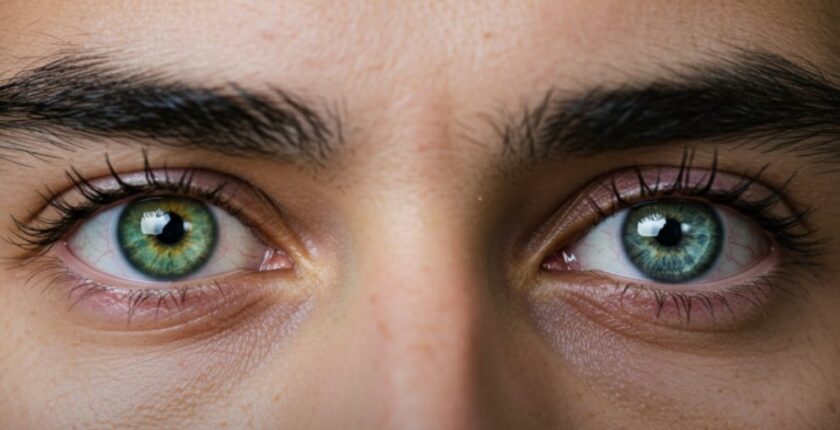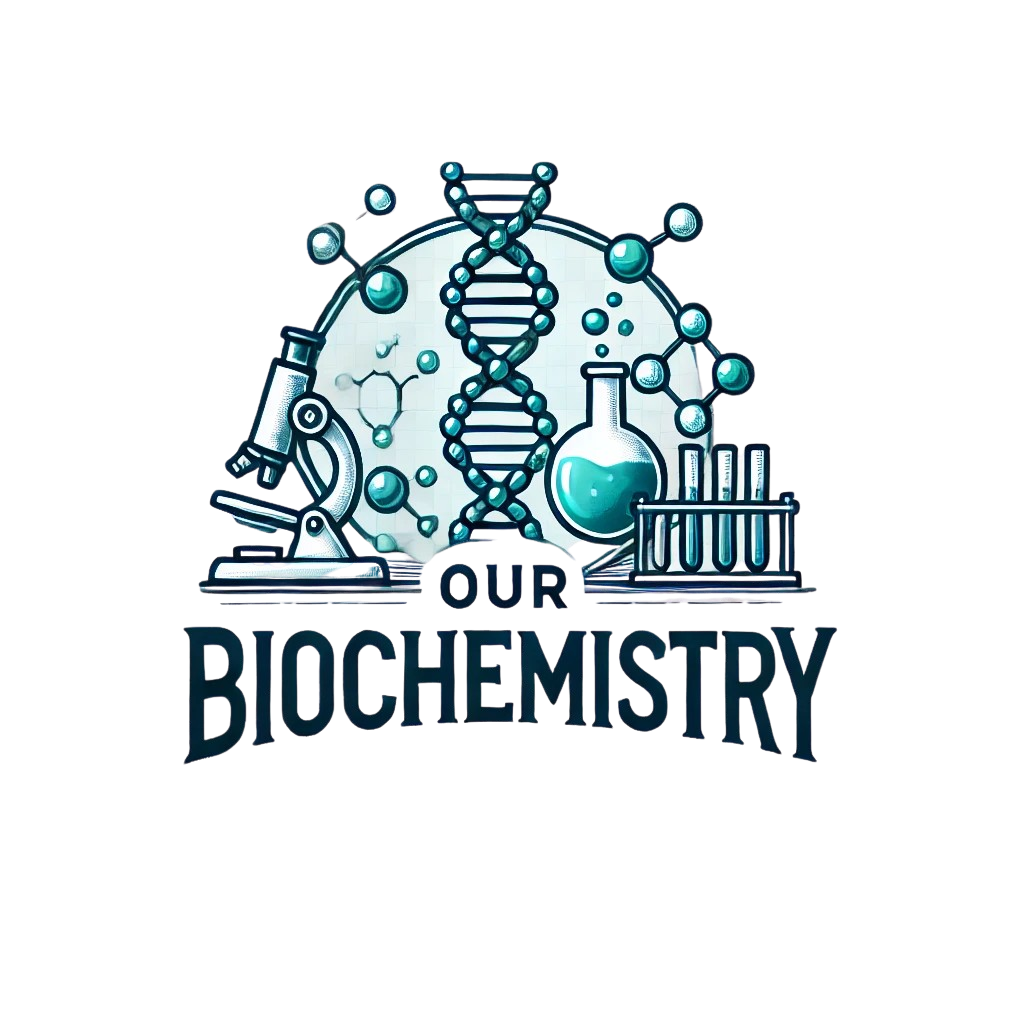Chimerism & DNA Identity: How Bone Marrow Transplants Can Change Genetic Profiles
Chimerism & DNA Identity: How Bone Marrow Transplants Can Change Genetic Profiles
- March 19, 2025
- Posted by: Dr. Harshal Sabane

Chimerism: When Two Become One
Genetically Speaking
Imagine waking up one day to find out that your DNA is no longer entirely yours. No, this isn’t the plot of a sci-fi thriller—it’s a real-life phenomenon called chimerism, and it can occur after life-saving medical procedures like bone marrow transplants. The case of Chris Long, an IT worker in Nevada, brings this fascinating biological anomaly into focus. After receiving a bone marrow transplant from a German donor, Long discovered that some of his DNA had been replaced by his donor’s genetic material [1]. This revelation not only sheds light on the marvels of modern medicine but also raises intriguing questions about identity, genetics, and even criminal investigations [2].
What is Chimerism?
Chimerism is the presence of two genetically distinct cell lines within one individual. In humans, this can occur naturally (such as in cases of fused fraternal twins) or through medical interventions like organ or bone marrow transplants [3]. In Long’s case, the donor’s stem cells took over his hematopoietic system, making him a chimera—a person with two sets of DNA. This process is not harmful but does create a mosaic-like genetic identity across different tissues [4].
The Science Behind the Phenomenon
When a patient undergoes a bone marrow transplant, their diseased or damaged bone marrow is replaced with healthy stem cells from a donor. These stem cells then repopulate the recipient’s blood and immune system. Over time, the recipient’s blood cells become genetically identical to those of the donor [5]. However, other tissues in the body retain the original DNA, creating a dual-genome situation [6].
This phenomenon is particularly fascinating because it challenges our traditional understanding of genetics. For example:
- Pathophysiology: After transplantation, donor-derived stem cells engraft in the recipient’s bone marrow and begin producing blood cells. This process leads to “complete chimerism” if all blood cells are donor-derived or “mixed chimerism” if both donor and recipient cells coexist. Monitoring chimerism levels is critical for ensuring successful engraftment and detecting potential complications like graft rejection [7].
- Implications for Identity: In Long’s case, his blood DNA was entirely donor-derived, while other tissues like his skin retained his original DNA. This duality doesn’t affect physical health but poses challenges in areas like forensic science and paternity testing [8].
Donor DNA Found in Semen: A Curious Case
Perhaps the most surprising finding in Long’s case was that four years after his transplant, all the DNA in his semen belonged to his donor [9]. How did this happen? The explanation lies in biology and Long’s personal medical history.
Semen contains not only sperm but also other cellular components like immune cells (leukocytes). After a bone marrow transplant, donor-derived immune cells circulate throughout the body and infiltrate various tissues, including those involved in semen production. In Long’s case, his vasectomy—performed years earlier—meant that no sperm was present in his semen samples. As a result, what was analyzed as “DNA” came from these immune cells rather than sperm [10].
It’s important to emphasize that this does not mean Long could father a child with his donor’s DNA. Sperm production occurs in specialized germ cells within the testes that are unaffected by bone marrow transplants. Dr. Mehrdad Abedi, who treated Long, confirmed that this phenomenon was due to contamination by donor-derived leukocytes rather than any alteration of germline DNA [11].
Medical Marvels Meet Forensic Nightmares
While chimerism is medically beneficial, it can create complications in unexpected areas—like crime scene investigations. Consider this: if Long were to leave behind a DNA sample at a crime scene, it would match his German donor rather than him! This isn’t just theoretical; there have been documented cases where chimerism has confounded law enforcement [12].
- In one instance, investigators matched DNA from a crime scene to an individual who was incarcerated at the time. The mystery unraveled when they discovered he had received a bone marrow transplant from his brother—the actual perpetrator [13].
- Similarly, in another case involving sexual assault evidence, police initially identified two suspects due to mixed DNA profiles—only to realize one profile belonged to the victim’s bone marrow donor [14].
These examples highlight how chimerism complicates forensic science and underscores the need for awareness among legal and medical professionals [15].
A Balancing Act: Risks and Rewards
While chimerism after transplantation is generally safe, it’s not without risks:
- Graft-Versus-Host Disease (GVHD): Donor immune cells may attack the recipient’s tissues as foreign invaders. Mixed chimerism can actually reduce GVHD risk by promoting tolerance between host and donor cells [16].
- Monitoring Chimerism: Regular testing is essential to ensure stable engraftment and detect early signs of graft failure or relapse in conditions like leukemia. For example, rapid declines in donor cell percentages often indicate immunologic rejection [17].
- Long-Term Follow-Up: Patients with mixed chimerism require ongoing monitoring for potential late complications, such as clonal hematopoiesis or secondary malignancies [18].
Chimerism Beyond Medicine: A Philosophical Twist
Beyond its medical implications, chimerism raises profound questions about identity and individuality. If your blood contains someone else’s DNA, are you still fully “you”? While this might sound like fodder for existential dread (or late-night dorm debates), it also underscores the interconnectedness of human biology [19].
And let’s not forget the humorous side—imagine explaining to your friends that your blood now has German citizenship! Or trying to convince airport security that your cheek swab doesn’t match your passport because you’re technically two people in one [20].
Conclusion
Chimerism is a testament to both the power and complexity of modern medicine. It saves lives through procedures like bone marrow transplants while challenging our understanding of genetics and identity [21]. For medical students navigating this fascinating field, let Chris Long’s story serve as both an inspiration and a reminder: science doesn’t just heal—it surprises [22].
So next time you’re studying hematology or preparing for rounds in transplant wards, remember that every patient carries stories written not just in their own DNA but sometimes in someone else’s too. And who knows? Maybe one day you’ll encounter your own chimera case—just make sure to double-check those forensic samples!
Citations:
- Long C. Chimerism: When Two Become One. Futurism. 2019 Dec 7. Available from: [https://futurism.com/neoscope/bone-marrow-transplant-semen-only-donors-dna](https://futurism.com/neoscope/bone-marrow-transplant-semen-only-donors-dna)
- Independent. Genetically Speaking. Independent. 2019 Dec 7. Available from: [https://www.independent.co.uk/news/world/americas/dna-bone-marrow-transplant-man-chimera-chris-long-forensic-science-police-a9238636.html](https://www.independent.co.uk/news/world/americas/dna-bone-marrow-transplant-man-chimera-chris-long-forensic-science-police-a9238636.html)
- QZ. DNA evidence’s reliability called into question by human chimera. QZ. 2019 Dec 7. Available from: [https://qz.com/1763584/dna-evidences-reliability-called-into-question-by-human-chimera](https://qz.com/1763584/dna-evidences-reliability-called-into-question-by-human-chimera)
- Progress. Forensics find donor DNA in semen of bone marrow transplant patient. Progress. 2019 Dec 7. Available from: [https://www.progress.org.uk/forensics-find-donor-dna-in-semen-of-bone-marrow-transplant-patient/](https://www.progress.org.uk/forensics-find-donor-dna-in-semen-of-bone-marrow-transplant-patient/)
- LinkedIn. After bone marrow transplant, man’s semen contains only donor’s DNA. LinkedIn. 2019 Dec 7. Available from: [https://www.linkedin.com/pulse/after-bone-marrow-transplant-mans-semen-contains-only-iakovos](https://www.linkedin.com/pulse/after-bone-marrow-transplant-mans-semen-contains-only-iakovos)
- ABA Journal. DNA of bone marrow recipient partly changed after the procedure with implications for law enforcement. ABA Journal. 2019 Dec 7. Available from: [https://www.abajournal.com/news/article/dna-of-bone-marrow-recipient-partly-changed-after-the-procedure-with-implications-for-law-enforcement](https://www.abajournal.com/news/article/dna-of-bone-marrow-recipient-partly-changed-after-the-procedure-with-implications-for-law-enforcement)
- ResearchGate. The effect of bone marrow transplants on DNA profiles: a case example. ResearchGate. 2019 Dec 7. Available from: [https://www.researchgate.net/publication/6332541_The_Effect_of_Bone_Marrow_Transplants_on_DNA_profiles_a_case_example](https://www.researchgate.net/publication/6332541_The_Effect_of_Bone_Marrow_Transplants_on_DNA_profiles_a_case_example)
- Stanford Children’s Health. Bone marrow transplant for children. Stanford Children’s Health. 2019 Dec 7. Available from: [https://www.stanfordchildrens.org/en/topic/default?id=bone-marrow-transplant-for-children-90-P03062](https://www.stanfordchildrens.org/en/topic/default?id=bone-marrow-transplant-for-children-90-P03062)
- NY Times. DNA bone marrow transplant crime lab. NY Times. 2019 Dec 7. Available from: [https://www.nytimes.com/2019/12/07/us/dna-bone-marrow-transplant-crime-lab.html](https://www.nytimes.com/2019/12/07/us/dna-bone-marrow-transplant-crime-lab.html)
- Montreal Children’s Hospital. True or false: a bone marrow donor must be a family member of the person who needs the transplant. Montreal Children’s Hospital. 2019 Dec 7. Available from: [https://montrealchildrenshospital.ca/health-info/true-or-false-a-bone-marrow-donor-must-be-a-family-member-of-the-person-who-needs-the-transplant/](https://montrealchildrenshospital.ca/health-info/true-or-false-a-bone-marrow-donor-must-be-a-family-member-of-the-person-who-needs-the-transplant/)
- News Medical. Transplant patient finds out his DNA has been replaced by that of his donor. News Medical. 2019 Dec 7. Available from: [https://www.news-medical.net/news/20191210/Transplant-patient-finds-out-his-DNA-has-been-replaced-by-that-of-his-donor.aspx](https://www.news-medical.net/news/20191210/Transplant-patient-finds-out-his-DNA-has-been-replaced-by-that-of-his-donor.aspx)
- Immunodeficiency UK. Can parents be a bone marrow match and so a donor for their child? Immunodeficiency UK. 2019 Dec 7. Available from: [https://www.immunodeficiencyuk.org/faq-items/can-parents-be-a-bone-marrow-match-and-so-a-donor-for-their-child/](https://www.immunodeficiencyuk.org/faq-items/can-parents-be-a-bone-marrow-match-and-so-a-donor-for-their-child/)
- NY Times. Chimera bone marrow DNA semen. NY Times. 2019 Dec 7. Available from: [https://www.nytimes.com/2019/12/12/science/chimera-bone-marrow-dna-semen.html](https://www.nytimes.com/2019/12/12/science/chimera-bone-marrow-dna-semen.html)
- CHP. Donor information. CHP. 2019 Dec 7. Available from: [https://www.chp.edu/our-services/blood-marrow-transplant-cellular-therapies/resources/donor-information](https://www.chp.edu/our-services/blood-marrow-transplant-cellular-therapies/resources/donor-information)
- AlphaBiolabs USA. Man’s DNA is replaced by donor’s following transplant. AlphaBiolabs USA. 2019 Dec 7. Available from: [https://alphabiolabsusa.com/blog/mans-dna-is-replaced-by-donors-following-transplant/](https://alphabiolabsusa.com/blog/mans-dna-is-replaced-by-donors-following-transplant/)
- Anthony Nolan. Donating your stem cells: a relative. Anthony Nolan. 2019 Dec 7. Available from: [https://www.anthonynolan.org/patients-and-families/support-parents-family-and-friends/donating-your-stem-cells-a-relative](https://www.anthonynolan.org/patients-and-families/support-parents-family-and-friends/donating-your-stem-cells-a-relative)
- RiGB. Human chimeras: why forensic DNA testing will never be the same. RiGB. 2019 Dec 7. Available from: [https://www.rigb.org/explore-science/explore/blog/human-chimeras-why-forensic-dna-testing-will-never-be-same](https://www.rigb.org/explore-science/explore/blog/human-chimeras-why-forensic-dna-testing-will-never-be-same)
- Oddity Central. Man’s DNA replaced by that of donor following bone marrow transplant. Oddity Central. 2019 Dec 7. Available from: [https://www.odditycentral.com/news/mans-dna-replaced-by-that-of-donor-following-bone-marrow-transplant.html](https://www.odditycentral.com/news/mans-dna-replaced-by-that-of-donor-following-bone-marrow-transplant.html)
- Ripley’s. DNA redesign. Ripley’s. 2019 Dec 7. Available from: [https://www.ripleys.com/stories/dna-redesign](https://www.ripleys.com/stories/dna-redesign)
- St. Jude. Donor parents. St. Jude. 2019 Dec 7. Available from: [https://www.stjude.org/research/progress/2022/donor-parents.html](https://www.stjude.org/research/progress/2022/donor-parents.html)
- Medical Xpress. Bone marrow transplant DNA. Medical Xpress. 2019 Dec 7. Available from: [https://medicalxpress.com/news/2018-01-bone-marrow-transplant-dna.html](https://medicalxpress.com/news/2018-01-bone-marrow-transplant-dna.html)
- PMC. The effect of bone marrow transplants on DNA profiles: a case example. PMC. 2019 Dec 7. Available from: [https://pmc.ncbi.nlm.nih.gov/articles/PMC3484410/](https://pmc.ncbi.nlm.nih.gov/articles/PMC3484410/)
